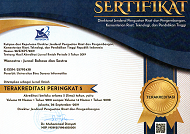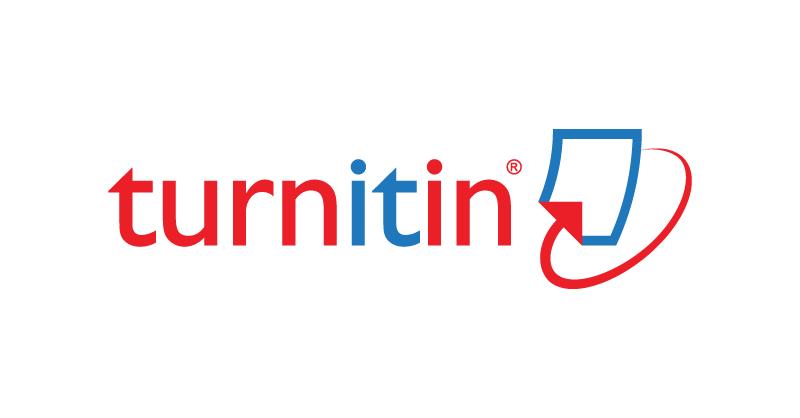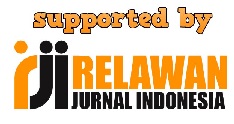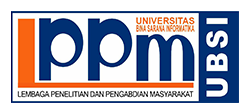Linguistic and Paralinguistic Features of Speech Anxiety of High School Students
Abstract
Full Text:
PDFReferences
Adawiyah, D. P. R. (2020). Pengaruh Penggunaan Aplikasi TikTok Terhadap Kepercayaan Diri Remaja di Kabupaten Sampang. Jurnal Komunikasi, 14(2), 135–148. https://doi.org/10.21107/ilkom.v14i2.7504
Aryadillah, S. (2017). Kecemasan Dalam Public Speaking (Studi Kasus Pada Presentasi Makalah Mahasiswa).
Ashirova, B. (2023). American Journal Of Philological Sciences Structure and Main Linguistic Characteristics of The Narrative Text. American Journal of Philological Sciences, 3(4), 78–82.
Brown, H. D. (2003). Testing, Assessing, and Teaching. Language Assessment: Principles and Classroom Practices, 315. https://evelintampubolon.files.wordpress.com/2016/09/h-_douglas_brown_-_language_assessment.pdf
Daud, A., Ras, F., Novitri, N., & Audia, C. P. (2019). Factors contributing to speaking anxiety: A case study of pre-service English teachers. Journal of Educational Sciences, 3(3), 412-422.
Diena Nurul Hikmah. (2018). Komunikasi Non Verbal Penyampaian Komunikasi. 1–5.
Effendi, S. (2012). Linguistik sebagai Ilmu Bahasa. Jurnal Perspektif Pendidikan, 5(1), 10. https://www.ojs.stkippgri-lubuklinggau.ac.id/index.php/JPP/article/view/353
Ellis, R. 1994. The Study of Second Language Acquisition. Oxford: Oxford University Press.
Fadli, M. R. (2021). Memahami desain metode penelitian kualitatif. Humanika, 21(1), 33–54. https://doi.org/10.21831/hum.v21i1.38075
Firmansyah, M., Masrun, M., & Yudha S, I. D. K. (2021). Esensi Perbedaan Metode Kualitatif Dan Kuantitatif. Elastisitas - Jurnal Ekonomi Pembangunan, 3(2), 156–159. https://doi.org/10.29303/e-jep.v3i2.46
Girsang, A. M., Liando, N. F., & Maru, M. G. (2021). Improving Students’ Ability in Writing Descriptive Text by Using Realia Media. Journal of English Language and Literature Teaching, 5(1).
Horwitz, E. (2001). Language anxiety and achievement. Annual Review of Applied Linguistics, 21, 112–126. https://doi.org/10.1017/s0267190501000071
Horwitz, E. K., Horwitz, M. B., & Cope, J. (1986). Foreign Language Classroom Anxiety. The Modern Language Journal, 70(2), 125–132. https://doi.org/10.1111/j.1540-4781.1986.tb05256.x
Jon, R. B., Fitri, H. alfiani, & Purnama, B. (2022). Eight Factors Bringing about Students’ Speaking Disfluency in Indonesia. International Journal of English and Applied Linguistics (IJEAL), 2(1), 83–94. https://doi.org/10.47709/ijeal.v2i1.1427
Kawulich, B. B. (2005, May). Participant observation as a data collection method. In Forum qualitative sozialforschung/forum: Qualitative social research (Vol. 6, No. 2).
Kumar, D. (2022). Style and Stylistic in Linguistic A Critical Overview. Journal of Language and Linguistics in Society, 25, 57–63. https://doi.org/10.55529/jlls.25.57.63
Mamesah, M., & Nur Utami, N. (2022). Pengaruh Konseling Online Menggunakan Teknik Desensitisasi Sistematis Terhadap Kecemasan Siswa Pada Saat Presentasi di SMPN 232 Jakarta. INSIGHT: Jurnal Bimbingan Konseling, 10(1), 46–52. https://doi.org/10.21009/insight.101.07
Marpaung, N. R., & Fithriani, R. (2023). English Speaking Anxiety Among Indonesian Junior High School Students: Unveiling Causes and Solutions. Tell-Us Journal, 9(1), 146–163. https://doi.org/10.22202/tus.2023.v9i1.6678
Noerjanah, S. L. A., & Dhigayuka, A. (2020). Strategi Pengajaran Guru Dalam Mengatasi Kecemasan Berbicara Siswa. Journal For Islamic Social Sciences, 4(1), 83–95. http://www.syekhnurjati.ac.id/jurnal/index.php/holistik
Pangestu, M., & Habibah, F. A. F. (2023). The Effect of Anxiety Level on Speaking Ability: Psycholinguistic Analysis. Pujangga: Jurnal Bahasa dan Sastra, 9(1), 123-139.
Pohan, A., & Nany Kusumawardany, I. (2023). Students’ Perception on. Speaking Anxiety in English Classroom: Psychological View Inspiring: English Education Journal, 6(1), 58–67.
Purba, N. (2018). The Role of Psycholinguistics in Language Learning and Teaching. Tell : Teaching of English Language and Literature Journal, 6(1), 47. https://doi.org/10.30651/tell.v6i1.2077
Puspitaningtyas, D. (2012). Kecemasan berbicara dalam presentasi bahasa indonesia siswa kelas Xi-Bahasa SMA Negeri 1 Grati Pasuruan. Jurnal Linguistik, 1(1), 1–9.
Ramezani, F., Sani, A. K., & Moghadam, K. (2016). Forensic linguistics in the light of crime investigation. Pertanika Journal of Social Sciences and Humanities, 24(1).
Robertson, S. M. C., Short, S. D., Sawyer, L., & Sweazy, S. (2021). Randomized controlled trial assessing the efficacy of expressive writing in reducing anxiety in first-year college students: the role of linguistic features. Psychology and Health, 36(9), 1041–1065. https://doi.org/10.1080/08870446.2020.1827146
Rozani, F. A., & Zaim, M. (2023). Language Production in Relation to Students ’ Anxiety to Speak English in Public. 12(4).
Suciati. (2020). Speaking Anxiety in EFL Classroom: Categories and Factors (Vol. 7, Issue 1).
Temirova, F. T. (2020). Importance Of Paralinguistic Features In Communication and Their Theoretical Study. The American Journal of Social Science and Education Innovations, 2(09), 111–116. https://doi.org/10.37547/tajssei/volume02issue09-15
University of Pretoria. (n.d.). The Role and Functions of Government . The Role and Function of Government, 1228–1230. https://repository.up.ac.za/bitstream/handle/2263/24808/03chapter3.pdf
Verdial. (2014). Bahan Ajar Mata Kuliah Berbicara. Universitas Timor.
DOI: https://doi.org/10.31294/wanastra.v16i2.22564
Copyright (c) 2024 Aisyah Nur Ashriyyah, Rohmani Nur Indah

This work is licensed under a Creative Commons Attribution-ShareAlike 4.0 International License.
Index by:
Published by Department of Research and Community Service (LPPM) Universitas Bina Sarana Informatika by supported Relawan Jurnal Indonesia
Jl. Kramat Raya No.98, Kwitang, Kec. Senen, Jakarta Pusat, DKI Jakarta 10450

This work is licensed under a Creative Commons Attribution-ShareAlike 4.0 International License







